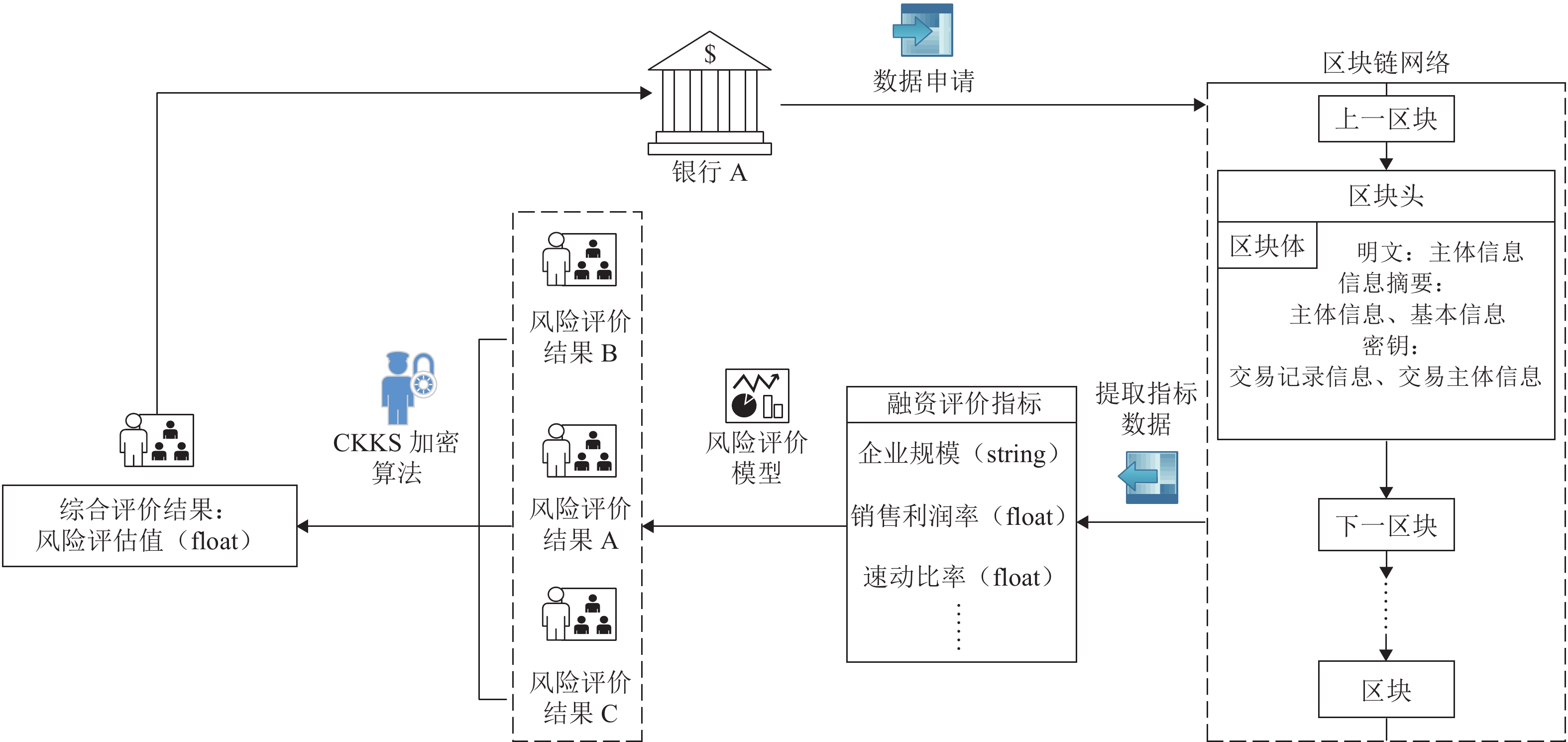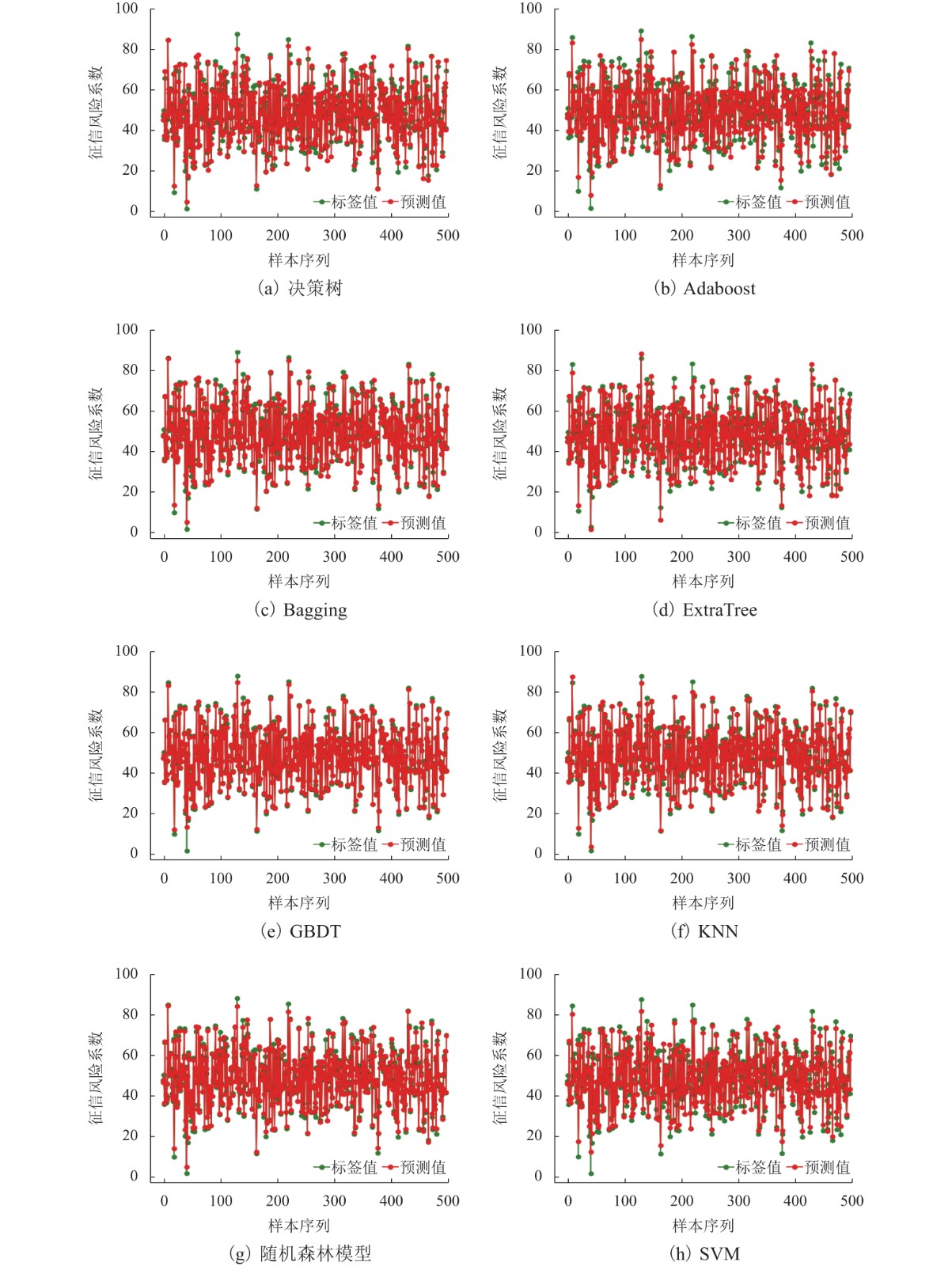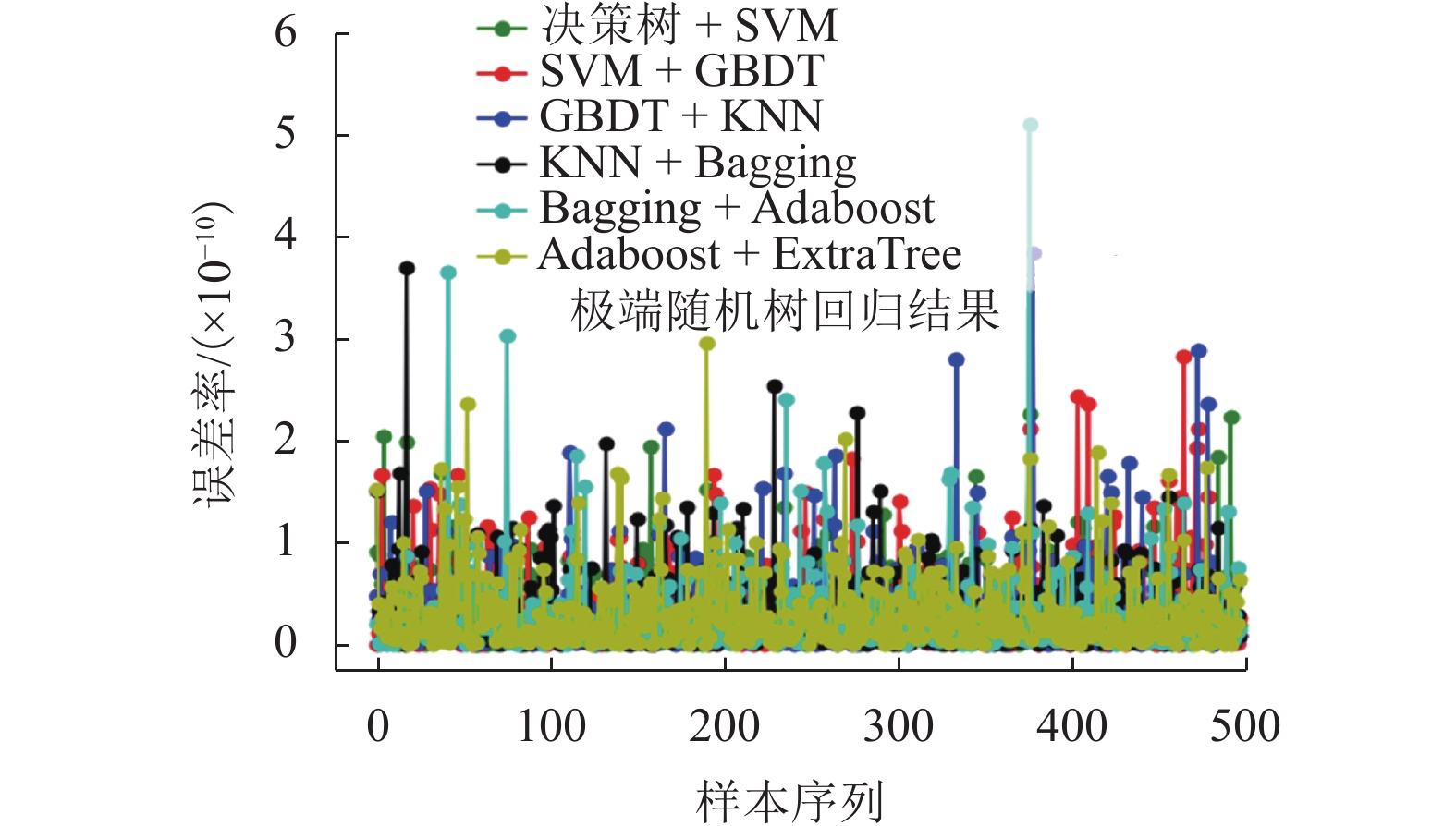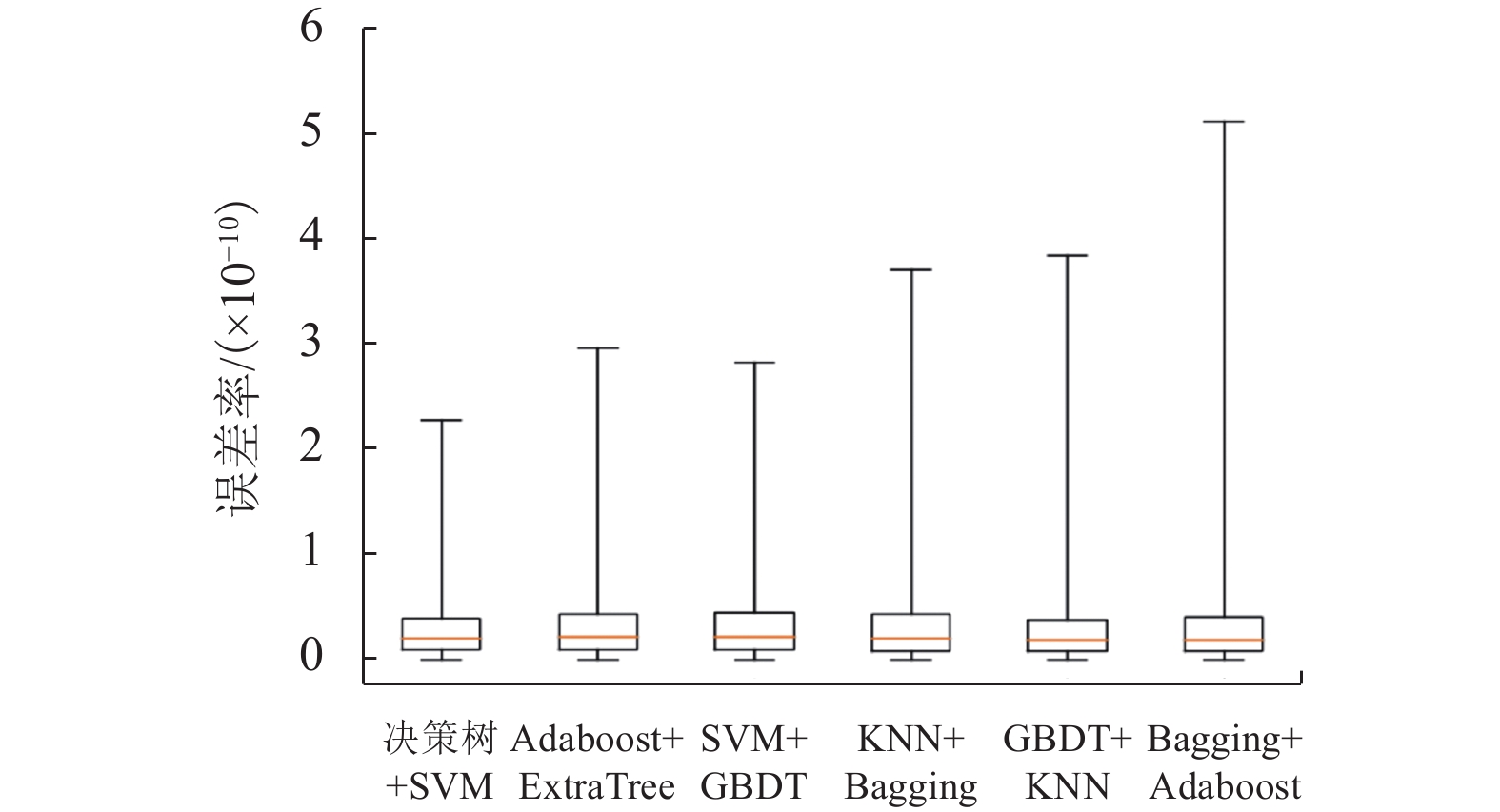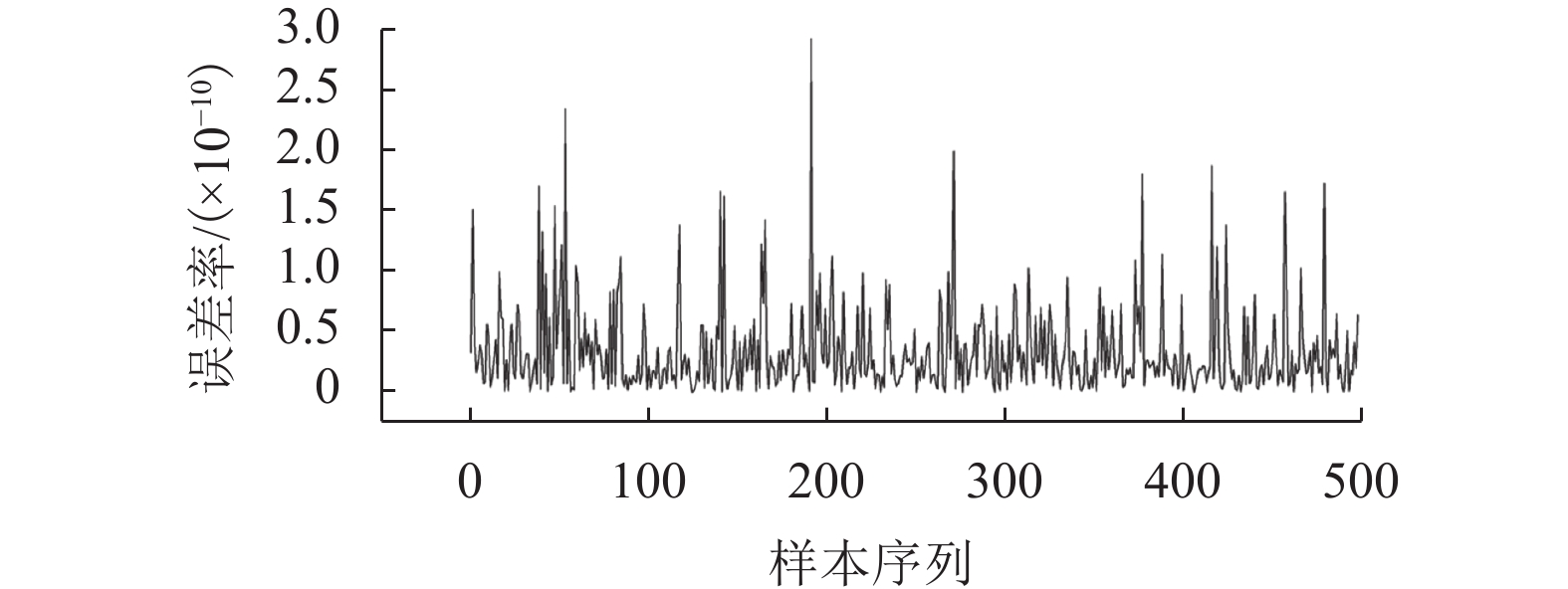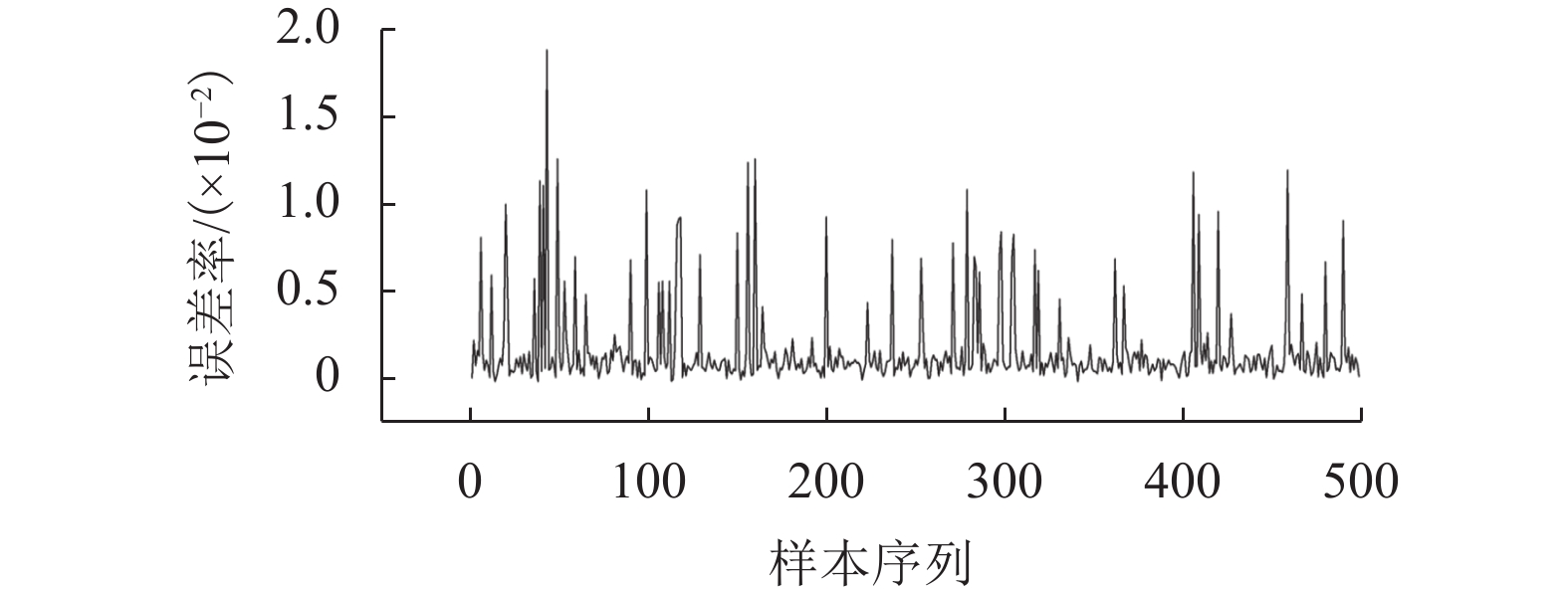Risk Evaluation Model of Blockchain Integration Based on CKKS Encryption Scheme
-
摘要:
针对区块链平台中存在的多方数据交互不可信以及隐私数据易泄露等问题,基于CKKS (Cheon-Kim-Kim-Song)全同态加密方案,提出了一种集成风险评价模型,把同态加密算法应用到风险评价中,将多种评价模型与同态加密结合起来. 首先,利用三角模糊综合评价方法确定各评价指标的权重,通过多种评价方法处理分布式数据库中的样本数据,获得相关节点对同一交易事件的风险评价结果;其次,利用公钥对评价结果进行加密并进行同态运算,获得密文综合评价结果,以避免风险评价过程中的数据泄露;再次,利用私钥对评价结果进行解码,获得明文综合评价结果;最后,选取5 000个中欧班列企业的样本数据作为案例,利用决策树模型、Adaboost模型、Bagging模型、ExtraTree极端随机数模型、GBDT (gradient boosting regression trees)模型、KNN(K-nearest neighbor)模型、随机森林模型、SVM (support vector machine)模型等最为常见的评价模型进行风险评价,并将经CKKS方案加密后的综合评价结果与明文直接计算的综合评价结果和经BFV (Brakerski-Fan-vercauteren)方案加密后的综合评价结果进行了对比. 结果表明:该集成风险评价模型具有普适性,对较为常见的评价模型均能适用;模型的综合评价结果误差率较小,与实际结果的误差率均在10−9以内;与BFV方案加密后的结果相比,经CKKS方案加密后的结果误差率小于前者的十万分之一,评价结果更为准确.
Abstract:Aiming at solving problems of distrust in the data interaction between multiple parties and leakage of privacy data, an integrated risk assessment model based on the Cheon-Kim-Kim-Song (CKKS) fully homomorphic encryption scheme is proposed by using homomorphic encryption algorithm in combination with multiple assessment models for risk assessment. Firstly, the triangular fuzzy comprehensive evaluation method is used to determine weights of evaluation indexs, and a variety of evaluation methods are used to process the sample data in the distributed database to obtain the risk evaluation results of related nodes for the same transaction event. Secondly, the public key is used to encrypt the evaluation results, and then homomorphic operation is performed to obtain the encrypted comprehensive evaluation results, so as to avoid data leakage in the process of risk assessment. Thirdly, the private key is used to decode the evaluation results to obtain decrypted comprehensive evaluation results. Finally, 5000 samples from China Railway Express companies are taken as cases to evaluate the risk with eight common evaluation models, including the decision tree model, Adaboost model, Bagging model, ExtraTree model, gradient boosting regression tree (GBDT) model, K-nearest neighbor (KNN) model, random forest model, and support vector machine (SVM) model. In addition, the comprehensive evaluation results encrypted by CKKS scheme are compared with the results directly calculated by plaintext and encrypted by BFV scheme. The findings show that: the integrated risk assessment model is universal and applicable to more common assessment models; the error rates of the comprehensive evaluation results obtained by the integrated risk assessment model are small, within 10−9 against the actual results; compared with the result encrypted by BFV scheme, the error rate of the result encrypted by CKKS scheme is less than 1/100000 of the former, and the evaluation result is more accurate.
-
Key words:
- Blockchain /
- data leakage /
- fully homomorphic encryption scheme /
- risk assessment /
- integrated model
-
近年来,区块链技术开始应用于金融[1]、运输[2]、能源[3-4]等领域. 2019年习近平总书记提出“要把区块链作为核心技术自主创新的主要突破口”之后,区块链平台建设速度加快. 但是,区块链平台也面临着链上交易事件的风险评价机制不成熟的问题,给区块链的应用推广带来了不便. 以金融领域为例,根据银行的2019年度报告,工行、农行、中行、建行、交行的不良贷款规模接近万亿元. 同时,中小企业融资难的问题仍然存在,很多优质项目难以获得资金支持. 例如,中欧班列中,很多企业要承担昂贵的运输成本和通关费用,却难以获得足够的资金支持. 区块链用纯数字方法构建信任关系,可以增强供应链金融的透明度、自动化和信任水平,提升企业融资的效率[5-6]. 然而,区块链无法确保源头信息的真实准确性,所以金融机构仍需进行融资前的风险评价. 而区块链平台公开透明的特点使得隐私数据存在着被泄露的风险,不利于金融机构获取多方信息,获得更加客观的评价结果[7-8]. 因此,建立一种更完善的风险评价机制,降低融资难度,为对外经贸合作提供支撑,具有重要意义.
通常情况下,金融机构需耗费时间和精力调研融资企业的经营情况,且该过程存在评价结果失真的风险. 除融资之外,在人事任用、社会管理等领域也存在着相似的情况. 因此,若能融合区块链上多个节点的评价结果,对风险进行综合评价,既能降低评价成本,也能使决策评价结果更客观. 然而,节点之间信息共享的过程存在数据泄露的风险,因此,风险评价方法还需考虑数据安全问题. 学者们对数据安全进行了长期的研究,同态加密算法是其中一项重要成果. 1978年,Rivest等[9]提出同态加密的思想和支持乘法计算的RSA (Rivest,Shamir and Adleman)方案. 随后,支持加法计算的同态加密方案[10]和全同态加密方案陆续被提出[11-12]. 2017年,Cheon等[13-14]提出了CKKS (Cheon-Kim-Kim-Song)加密方案,支持对浮点数的近似计算,在全同态加密算法中,效率较高,是最重要、最具前景的同态加密算法之一. 部分学者[15-18]已将同态加密算法应用到区块链系统中,以保障链上用户的数据隐私安全.
目前,风险评价方法已较成熟,广泛应用于公司经营[19-20]、企业融资[21-22]、社会管理[23]、工程管理[24-25]、事故预防[26-27]等领域. 但是,既有评价方法对区块链平台去中心化、去信任的特点考虑不足,并不适用. 为此,本文提出了一种结合多种评价方法与CKKS加密方案的集成风险评价模型. 区块链上各节点采用合适的模型进行风险评价;随后,利用公钥对各节点评价结果进行加密;之后,对密文评价结果进行同态运算,获得综合多方意见的评价结果;最后,利用私钥进行解密,获得明文综合评价结果. 该模型考虑了单节点评价结果的片面性和数据隐私问题,能为链上交易事件提供更加客观的风险评价结果.
1. 问题描述与模型构建思路
本文研究的是区块链平台建立之后,链上节点对交易事件风险评价过程中的数据失真和信息安全问题. 对于传统的风险评价模型,数据对象垂直分布的情况下,各节点需花费人力和时间调研交易对象的背景情况及交易历史等. 同时在沟通机制缺失的情况下,仅凭自身掌握的数据信息,也容易造成评价结果的失真. 本文研究在数据对象垂直分布情况下考虑信息安全问题,并且集成模型指标固定达到水平分布已知条件,将多节点对交易事件的风险评价结果在加密状态下融合,对交易事件的风险进行客观的综合评价,实现评价结果的安全共享. 现有评价模型与基于CKKS加密方案的区块链平台的集成风险评价模型运作模式如图1所示.
如图1所示,银行A从分布式数据库中获取与融资企业的交易记录信息,并提取评价指标数据,利用风险评价模型对提取出的评价指标数据进行计算,得到风险评价结果A. 之后,通过CKKS加密计算,得到综合评价结果,风险评价流程如图2所示.
2. 模型构建
2.1 单节点风险评价
区块链上各节点可以采用不同评价方法对交易事件的风险进行评价,假设各节点通过三角模糊函数对指标赋权后,利用不同评价模型进行风险评价. 设某一节点的专家数量为
$ K $ ,第$ k $ 个专家的权重为$ {p_k} $ ,依据专家的履历确定. 专家$ k $ 给出评价指标$ i $ 相对于评价指标$ j $ 的重要度三角模糊数为skij=(lkij,Mkij,ukij), (1) 式中:
$ k = 1,2, \cdots ,K $ ;$ i,j = 1,2,\; \cdots ,a $ ;$ {u_{kij}} $ 、$ {M_{kij}} $ 、$ {l_{kij}} $ 分别为评价指标$ i $ 相对于评价指标$ j $ 的重要度的上界、中指和下界.根据0.1~0.9标度[28](如表1所示),确定
$ {s_{kij}} $ 的值. 则评价指标$ i $ 相对于评价指标$ j $ 的重要度三角模糊数为表 1 0.1~0.9标度的含义Table 1. Meaning of scale 0.1~0.9标度 对应的三角模糊数 含义 0.1 (0.1,0.1,0.2) 指标 i 相对于指标 j 极端不重要 0.3 (0.2,0.3,0.4) 指标 i 相对于指标 j 明显不重要 0.5 (0.4,0.5,0.6) 指标 i 与指标 j 同样重要 0.7 (0.6,0.7,0.8) 指标 i 相对于指标 j 明显重要 0.9 (0.8,0.9,0.9) 指标 i 相对于指标 j 极端重要 sij=(lij,Mij,uij)=(K∑k=1pklkij,K∑k=1pkMkij,K∑k=1pkukij). (2) 利用三角模糊数的期望值公式将三角模糊数转化为清晰值,期望值为
E(sij)=[(1−μ)lij+Mij+μuij]/2, (3) 式中:
$ \mu $ 为上界倾向系数,取决于专家对指标$ i、j $ 的态度,$ \mu \in (0,1) $ ,$ \mu $ 值越大,表明专家更倾向于$ {s_{ij}} $ 取上界,以提高指标$ i $ 相对于指标$ j $ 的重要性,反之,则表明专家更倾向于$ {s_{ij}} $ 取下界,以降低指标$ i $ 相对于指标$ j $ 的重要性,假设专家对$ {s_{ij}} $ 取上、下界保持中立,取$ \mu = 0.5 $ .通过转化,将三角模糊评价指标矩阵
$ {\boldsymbol{S}} = {({s_{ij}})_{a \times a}} $ 转化为模糊互补判断矩阵$ {{\boldsymbol{S}}_{\rm{E}}} = {(E({s_{ij}}))_{a \times a}} $ .计算评价指标三角模糊权重向量为
W=(w1,w2,⋯,wi,⋯,wa), (4) wi=(a∑j=1lija∑i=1a∑j=1lij,a∑j=1Mija∑i=1a∑j=1Mij,a∑j=1uija∑i=1a∑j=1uij). (5) 利用三角模糊数期望值公式计算评价指标的最终权重向量为
V=(v1,v2,⋯,vi,⋯,va), (6) 式中:
${v_i} = \dfrac{{\displaystyle\sum\limits_{j = 1}^a {{l_{ij}}} }}{{2\displaystyle\sum\limits_{i = 1}^a {\displaystyle\sum\limits_{j = 1}^a {{l_{ij}}} } }} + \dfrac{{\displaystyle\sum\limits_{j = 1}^a {{M_{ij}}} }}{{\displaystyle\sum\limits_{i = 1}^a {\displaystyle\sum\limits_{j = 1}^a {{M_{ij}}} } }} + \dfrac{{\displaystyle\sum\limits_{j = 1}^a {{u_{ij}}} }}{{2\displaystyle\sum\limits_{i = 1}^a {\displaystyle\sum\limits_{j = 1}^a {{u_{ij}}} } }}$ .对结果进行一致性检验,若不满足一致性条件,需要重新建立评价矩阵. 若符合一致性检验要求,即根据指标权重,对交易事件的风险进行评价.
设该节点从分布式数据库中获取样本集T,假设有
$ n $ 个交易事件需要进行评价,则该节点评价结果向量为C=X(T,W)=(c1,c2,⋯,cf,⋯,cn), (7) 式中:
$ X $ 为采用的评价方法,可以是决策树、SVM (support vector machine)模型、KNN (K-nearest neighbor)模型等;$ X({{T}},{\boldsymbol{W}}) $ 表示该节点利用评价方法$ X $ ,结合样本集T和模糊权重向量$ {\boldsymbol{W}} $ 对一系列交易事件进行风险评价;$ {c_f} $ 为节点对交易事件$ f $ 的风险评价结果,$ f = 1,2, \cdots, n $ .假设链上有
$ d $ 个相关节点能够对交易事件进行评价,则交易事件$ f $ 的风险评级结果向量为Cf=(cf1,cf2,⋯,cft,⋯,cfd), (8) 式中:
$ {c_{ft}} $ 为节点t对交易事件f的评价结果,$ t = 1,2, \cdots ,d $ .2.2 评价结果加密
基于LWE (learning with error)问题生成公私钥对
$({{{\boldsymbol{p}}_{\rm{k}}}},{{{\boldsymbol{s}}_{\rm{k}}}})$ 和计算密钥${{{\boldsymbol{e}}_{\rm{k}}}}$ ,将各节点的评价节点结果转化为密文,公式为H=(h1,h2,⋯,hd), (9) ht=(cft,0)+pTkr, (10) 式中:
$ {\boldsymbol{r}} $ 为随机均匀选取的$\tau $ 维向量,$ \tau $ 为生成公私钥对和计算密钥的过程中选取的整数参数,${\boldsymbol{r}}= (r_1,r_2,\cdots,r_o\cdots,r_\tau) $ ,$r_o\in \{0,1\} $ .对获得的密文进行同态运算,假设所有节点评价结果的权重相同,则
h=h1+d∑t=2ht(mod (11) 式中:
$ p $ 、l1、q0均为生成密钥LWE (learning with error)问题中的整数参数,其中,$ p $ 为质数.对获得的加密结果进行重缩放,缩放之后的密文为
{{\boldsymbol{h}}_{\rm{z}}} = \left[ {\frac{{{p^{{l_2}}}}}{{{p^{{l_1}}}}}{\boldsymbol{h}}} \right] \text{,} (12) 式中:
$ \left[ x \right] $ 为距离$ x $ 最近的整数;l2为生成密钥的LWE问题中的整数参数.2.3 密文解码
利用密文向量hz与私钥
${\boldsymbol{s}_{\rm{k}}}$ 进行解密,输出解密后的明文评价结果为c = {\boldsymbol{h}}_{\rm{z}}{\boldsymbol{s}}_{\rm{k}}\bmod {q_l}. (13) 3. 案例分析
本文选取5 000条2019年11月份的中欧班列企业的海关运单数据,提取出企业规模、销售利润率、速动比率、存货周转率、资产负债率、以往履约情况、核心企业对外担保情况、供应链关系强度、赊销周期、产品可替代性、权益乘数、质押物变现能力、总资产周转率等15个评价指标数据[29]. 通过随机抽样,得到45 00条样本数据,采用回归算法训练得到风险评价水平分布刻画模型. 利用回归得到的模型对剩余的500条数据进行计算,得到单模型融资风险评价结果. 随后,对各模型的评价结果分别运用CKKS方案进行同态加密计算,得到密文综合评价结果,经过解密后得到的综合评价结果分别与组合条件下明文计算结果进行对比,计算误差率. 最后,选取KNN (K-nearest neighbor)模型、随机森林模型的评价结果,分别利用CKKS和BFV (Brakerski-Fan-vercauteren)两种经典的全同态加密方案进行同态加密计算,对比综合评价结果的误差率.
3.1 定性指标赋值
梳理企业融资风险评价指标体系中的定性指标,包括交易履约情况、核心企业对外担保情况、供应链关系强度,并对其进行了赋值,所有指标的评分取值为0~10分,定性指标的评分标准见表2.
表 2 定性指标量化评分表Table 2. Quantitative scoring of qualitative indices定性指标 评价指标分档/分 [8, 10] [4, 8) [0, 4) 交易履约情况(X8) 好 中 差 核心企业的对外担保状况(X9) 几乎无 少量 较多 供应链关系的强度(X10) 高 中 低 3.2 指标赋权
分别请5组专家对指标进行打分,每组专家5人,专家的权重三角模糊数如表3所示. 表中:
$ {B_m} $ 为第$ m $ 个专家组,$ m = 1,2, \cdots ,5 $ ;$ {w_m} $ 为通过计算得到的每个专家组的权重三角模糊数.表 3 三角模糊打分表Table 3. Triangular fuzzy scoring resultsk B1 B2 B3 B4 B5 1 (0.1,0.2,0.3) (0,0.1,0.3) (0.1,0.3,0.5) (0.5,0.2,0.3) (0.6,0.8,0.9) 2 (0.2,0.3,0.3) (0.4,0.7,0.8) (0.3,0.2,0.2) (0.7,0.8,0.9) (0.1,0.2,0.4) 3 (0.4,0.5,0.3) (0.1,0.3,0.5) (04,0.5,0.7) (0.1,0.4,0.6) (0.1,0.6,0.7) 4 (0.5,0.7,0.3) (0.3,0.6,0.9) (0.4,0.6,0.8) (0.3,0.5,0.7) (0.1,0.3,0.4) 5 (0.6,0.4,0.3) (0.2,0.4,0.5) (0.5,0.8,0.9) (0.5,0.6,0.8) (0.2,0.4,0.5) wm (0.15, 0.21,0.32) (0.13,0.22,0.35) (0.11,0.18,0.28) (0.18,0.25,0.39) (0.09,0.14,0.24) 将三角模糊数转化为清晰值,通过量纲归一化处理,构造加权判断矩阵计算相对贴近度,排序后得到最终权重如表4所示.
表 4 指标赋权结果Table 4. Index weighting results指标名称 变量 权重 指标名称 变量 权重 企业规模 X1 0.0246 核心企业对外担保情况 X9 0.1512 销售利润率 X2 0.0833 供应链关系强度 X10 0.0014 速动比率 X3 0.0255 赊销周期 X11 0.1146 存货周转率 X4 0.0117 产品可替代性 X12 0.0884 资产负债率 X5 0.0140 权益乘数 X13 0.0176 交易量 X6 0.0748 质押物变现能力 X14 0.0799 交易金额 X7 0.0363 总资产周转率 X15 0.1329 交易履约情况 X8 0.1437 由表可知:核心企业对外担保情况、总资产周转率、以往履约情况等3个指标的权重较大,说明这3个指标对企业融资风险的影响较大,从财务理论角度是合适的,核心企业对外担保情况、以往履约情况的权重较大,与实际情况契合.
3.3 企业融资风险评价模型
分别选取目前最为常见的决策树模型、Adaboost模型、Bagging模型、ExtraTree极端随机数模型、GBDT (gradient boosting regression trees)模型、KNN模型、随机森林模型、SVM (support vector machine)模型等评价模型对企业融资风险进行评价,调用python sklearn库中算法执行该过程. 从5 000个样本中随机抽取4 500个训练样本集和500个测试样本集,用于回归模型的训练和测试,测试结果如图3所示.
从图中可以看出:不同模型的预测效果良好,预测分类结果基本与真实情况一致,所有模型预测准确率均超过95%,能够对企业的融资风险进行准确的评价.
3.4 同态加密结果
利用CKKS全同态加密方案对基于不同模型评价后的结果进行不同组合后进行加密,采用pyseal基于微软的seal修改的python版本执行该过程,并将评价结果和直接进行明文加权平均的综合评价结果进行了对比,误差率分布如图4和图5所示.
从图4可知:所有评价结果之间误差率均小于1.00 × 10−9,仅有个别异常数据的加密误差率大于3.00 × 10−10,结合图5中的加密结果的误差率箱线图结果可知,所有组合方案得到的结果的正态分布均呈现偏左分布,均值均小于1 × 10−10. 图4和图5显示,CKKS全同态加密算法的组合方案适用于目前常用的评价模型,对企业融资风险评价结果影响较小. 因而,基于CKKS全同态加密方案的融资风险评价机制普适性高,可以用于实际的评价中.
分别利用CKKS全同态加密方案和BFV全同态加密方案对KNN模型、随机森林模型的评价结果进行加密计算,调用pyseal基于微软的seal修改的python版本执行该过程,并将两种经过同态加密后的评价结果和直接进行明文加权平均的综合评价结果进行了对比,结果如表5和图6、7所示.
表 5 CKKS方案和BFV方案同态加密结果及误差率Table 5. Homomorphic encryption results and error rates of CKKS and BFV schemes编号 KNN 模型 +
随机森林模型CKKS 全同态加密
评价结果CKKS 方案
误差率BFV 全同态加密
评价结果BFV 方案
误差率1 48.6117737805 48.6117737789 3.34 × 10−11 48.6094744655 4.73 × 10−5 2 38.4173642857 38.4173642916 1.53 × 10−10 38.3934853887 6.22 × 10−4 3 66.6095043478 66.6095043506 4.09 × 10−11 66.6003539367 1.37 × 10−4 4 40.7277690992 40.7277690999 1.66 × 10−11 40.7098999864 4.39 × 10−4 5 36.0318162194 36.0318162184 2.58 × 10−11 36.0170565909 4.10 × 10−4 6 39.2235467290 39.2235467305 3.98 × 10−11 39.1413627605 2.10 × 10−3 7 45.2551751634 45.2551751619 3.20 × 10−11 45.2384881180 3.69 × 10−4 8 85.5722701987 85.5722701993 7.54 × 10−12 85.5655826327 7.82 × 10−5 9 59.7378161329 59.7378161324 8.14 × 10−12 59.7254652272 2.07 × 10−4 10 49.4582034252 49.4582034281 5.74 × 10−11 49.4489389677 1.87 × 10−4 11 50.6262683040 50.6262683016 4.62 × 10−11 50.6237741777 4.93 × 10−5 12 59.0855247219 59.0855247221 4.30 × 10−12 59.0248410817 1.03 × 10−3 13 50.8218075188 50.8218075195 1.39 × 10−11 50.8154754434 1.25 × 10−4 14 51.5208750000 51.5208750014 2.77 × 10−11 51.5204698244 7.86 × 10−6 15 40.6476813842 40.6476813860 4.43 × 10−11 40.6440481786 8.94 × 10−5 16 41.8885428177 41.8885428182 1.16 × 10−11 41.8792671831 2.21 × 10−4 17 37.0070685441 37.0070685404 1.01 × 10−10 36.9933666065 3.70 × 10−4 18 66.6304171240 66.6304171283 6.33 × 10−11 66.6209557226 1.42 × 10−4 19 14.8742302481 14.8742302472 6.03 × 10−11 14.8490706101 1.69 × 10−3 20 38.9383642857 38.9383642857 3.34 × 10−11 38.8372207385 2.60 × 10−5 从表5和图7可以看出,基于BFV方案的评价结果的误差率几乎都大于1.00 × 10−6;而从表5和图6可以看出,基于CKKS方案的评价结果的误差率均小于3.00 × 10−10,仅有个别异常数据的加密误差率大于1.50 × 10−11,误差率更小. 因此,基于CKKS方案的融资风险评价机制对企业融资风险评价结果影响较小,评价结果更为准确.
4. 结 论
本文提出了一种结合评价方法与CKKS加密方案的集成风险评价模型,用于解决评价过程中存在的隐私数据泄露的问题. 研究了在数据对象垂直分布情况下,区块链各节点如何在保证信息安全的前提下,结合其他节点所掌握的信息,实现对区块链上单个交易事件的风险进行相对客观的评价. 考虑信息安全问题,集成评价模型将区块链中多节点对交易事件的风险评价结果在加密状态下融合,对交易事件的风险进行客观的综合评价,能有效解决评价资源共享和信息泄露问题. 通过对中欧班列企业的案例研究,验证了模型的准确性、有效性和普适性. 随着中欧班列区块链基础设施的逐步建成,利用该模型可以更好地对企业的融资风险进行评估,从而推动中欧班列的高质量发展.
-
表 1 0.1~0.9标度的含义
Table 1. Meaning of scale 0.1~0.9
标度 对应的三角模糊数 含义 0.1 (0.1,0.1,0.2) 指标 i 相对于指标 j 极端不重要 0.3 (0.2,0.3,0.4) 指标 i 相对于指标 j 明显不重要 0.5 (0.4,0.5,0.6) 指标 i 与指标 j 同样重要 0.7 (0.6,0.7,0.8) 指标 i 相对于指标 j 明显重要 0.9 (0.8,0.9,0.9) 指标 i 相对于指标 j 极端重要 表 2 定性指标量化评分表
Table 2. Quantitative scoring of qualitative indices
定性指标 评价指标分档/分 [8, 10] [4, 8) [0, 4) 交易履约情况(X8) 好 中 差 核心企业的对外担保状况(X9) 几乎无 少量 较多 供应链关系的强度(X10) 高 中 低 表 3 三角模糊打分表
Table 3. Triangular fuzzy scoring results
k B1 B2 B3 B4 B5 1 (0.1,0.2,0.3) (0,0.1,0.3) (0.1,0.3,0.5) (0.5,0.2,0.3) (0.6,0.8,0.9) 2 (0.2,0.3,0.3) (0.4,0.7,0.8) (0.3,0.2,0.2) (0.7,0.8,0.9) (0.1,0.2,0.4) 3 (0.4,0.5,0.3) (0.1,0.3,0.5) (04,0.5,0.7) (0.1,0.4,0.6) (0.1,0.6,0.7) 4 (0.5,0.7,0.3) (0.3,0.6,0.9) (0.4,0.6,0.8) (0.3,0.5,0.7) (0.1,0.3,0.4) 5 (0.6,0.4,0.3) (0.2,0.4,0.5) (0.5,0.8,0.9) (0.5,0.6,0.8) (0.2,0.4,0.5) wm (0.15, 0.21,0.32) (0.13,0.22,0.35) (0.11,0.18,0.28) (0.18,0.25,0.39) (0.09,0.14,0.24) 表 4 指标赋权结果
Table 4. Index weighting results
指标名称 变量 权重 指标名称 变量 权重 企业规模 X1 0.0246 核心企业对外担保情况 X9 0.1512 销售利润率 X2 0.0833 供应链关系强度 X10 0.0014 速动比率 X3 0.0255 赊销周期 X11 0.1146 存货周转率 X4 0.0117 产品可替代性 X12 0.0884 资产负债率 X5 0.0140 权益乘数 X13 0.0176 交易量 X6 0.0748 质押物变现能力 X14 0.0799 交易金额 X7 0.0363 总资产周转率 X15 0.1329 交易履约情况 X8 0.1437 表 5 CKKS方案和BFV方案同态加密结果及误差率
Table 5. Homomorphic encryption results and error rates of CKKS and BFV schemes
编号 KNN 模型 +
随机森林模型CKKS 全同态加密
评价结果CKKS 方案
误差率BFV 全同态加密
评价结果BFV 方案
误差率1 48.6117737805 48.6117737789 3.34 × 10−11 48.6094744655 4.73 × 10−5 2 38.4173642857 38.4173642916 1.53 × 10−10 38.3934853887 6.22 × 10−4 3 66.6095043478 66.6095043506 4.09 × 10−11 66.6003539367 1.37 × 10−4 4 40.7277690992 40.7277690999 1.66 × 10−11 40.7098999864 4.39 × 10−4 5 36.0318162194 36.0318162184 2.58 × 10−11 36.0170565909 4.10 × 10−4 6 39.2235467290 39.2235467305 3.98 × 10−11 39.1413627605 2.10 × 10−3 7 45.2551751634 45.2551751619 3.20 × 10−11 45.2384881180 3.69 × 10−4 8 85.5722701987 85.5722701993 7.54 × 10−12 85.5655826327 7.82 × 10−5 9 59.7378161329 59.7378161324 8.14 × 10−12 59.7254652272 2.07 × 10−4 10 49.4582034252 49.4582034281 5.74 × 10−11 49.4489389677 1.87 × 10−4 11 50.6262683040 50.6262683016 4.62 × 10−11 50.6237741777 4.93 × 10−5 12 59.0855247219 59.0855247221 4.30 × 10−12 59.0248410817 1.03 × 10−3 13 50.8218075188 50.8218075195 1.39 × 10−11 50.8154754434 1.25 × 10−4 14 51.5208750000 51.5208750014 2.77 × 10−11 51.5204698244 7.86 × 10−6 15 40.6476813842 40.6476813860 4.43 × 10−11 40.6440481786 8.94 × 10−5 16 41.8885428177 41.8885428182 1.16 × 10−11 41.8792671831 2.21 × 10−4 17 37.0070685441 37.0070685404 1.01 × 10−10 36.9933666065 3.70 × 10−4 18 66.6304171240 66.6304171283 6.33 × 10−11 66.6209557226 1.42 × 10−4 19 14.8742302481 14.8742302472 6.03 × 10−11 14.8490706101 1.69 × 10−3 20 38.9383642857 38.9383642857 3.34 × 10−11 38.8372207385 2.60 × 10−5 -
[1] ELGHAISH F A K, ABRISHAMI S, HOSSEINI M R. Integrated project delivery with blockchain: an automated financial system[J]. Automation in Construction, 2020, 114(1): 209-224. [2] LIU H, ZHANG Y, YANG T. Blockchain-enabled security in electric vehicles cloud and edge computing[J]. IEEE Network, 2018, 32(3): 78-83. doi: 10.1109/MNET.2018.1700344 [3] 邰雪,孙宏斌,郭庆来. 能源互联网中基于区块链的电力交易和阻塞管理方法[J]. 电网技术,2016,40(12): 3630-3638.TAI Xue, SUN Hongbin, GUO Qinglai. Electricity transactions and congestion management based on blockchain in energy internet[J]. Power System Technology, 2016, 40(12): 3630-3638. [4] 张宁,王毅,康重庆,等. 能源互联网中的区块链技术:研究框架与典型应用初探[J]. 中国电机工程学报,2016,36(15): 4011-4023.ZHANG Ning, WANG Yi, KANG Chongqing, et al. Blockchain technique in the energy Internet: preliminary research framework and typical applications[J]. Proceedings of the CSEE, 2016, 36(15): 4011-4023. [5] 袁勇,王飞跃. 区块链技术发展现状与展望[J]. 自动化学报,2016,42(4): 481-494.YUAN Yong, WANG Feiyue. Blockchain: the state of the art and future trends[J]. Acta Automatica Sinica, 2016, 42(4): 481-494. [6] OMRAN Y, HENKE M, HEINES R, et al. Blockchain-driven supply chain finance: towards a conceptual framework from a buyer perspective[C]//2017: 26th Annual Conference of the International Purchasing and Supply Education and Research Association. Budapest: [s.n.], 2017: 1-15. [7] 徐忠,邹传伟. 区块链能做什么、不能做什么?[J]. 金融研究,2018(11): 1-16.XU Zhong ZOU Chuanwei. What can blockchain do and cannot do?[J]. Journal of Financial Research, 2018(11): 1-16. [8] 龚强,班铭媛,张一林. 区块链、企业数字化与供应链金融创新[J]. 管理世界,2021,37(2): 3,22-34. doi: 10.3969/j.issn.1002-5502.2021.02.004GONG Qiang, BAN Mingyuan, ZHANG Yilin. Blockchain, enterprise digitalization and supply chain finance innovation[J]. Journal of Management World, 2021, 37(2): 3,22-34. doi: 10.3969/j.issn.1002-5502.2021.02.004 [9] RIVEST RL, ADLEMAN L M, DERTOUZOS M L. On databanks and privacy homomorphisms[J]. Foundations of Secure Computation, 1978, 76(4): 169-179. [10] GOLDWASSER S, MICALI S. Probabilistic encryption[J]. Journal of Computer and System Sciences, 1984, 28(2): 270-299. doi: 10.1016/0022-0000(84)90070-9 [11] GENTRY C. Fully homomorphic encryption using ideal lattices[C]//In Proceedings of the Forty-First Annual ACM Symposium on Theory of computing, Association for Computing Machinery. New York: ACM Press, 2009: 169-178. [12] GENTRY C. A fully homomorphic encryption scheme[M]. Ann Arbor: [s.n.], 2009. [13] CHEON J H , KIM A , KIM M , et al. Homomorphic encryption for arithmetic of approximate numbers[C]//International Conference on the Theory and Application of Cryptology and Information Security. Hong Kong: Springer, 2017: 409-437. [14] 郑尚文,刘尧,周潭平,等. 优化的基于错误学习问题的CKKS方案[J]. 计算机应用,2021,41(6): 1723-1728.ZHENG Shangwen, LIU Yao, ZHOU Tanping, et al. Optimized CKKS scheme based on learning with errors problem[J]. Journal of Computer Applications, 2021, 41(6): 1723-1728. [15] NAKASUMI M. Information sharing for supply chain management based on block chain technology[C]//2017 IEEE 19th Conference on Business Informatics. Thessaloniki: IEEE, 140-149. [16] 刘彦松,夏琦,李柱,等. 基于区块链的链上数据安全共享体系研究[J]. 大数据,2020,6(5): 92-105.LIU Yansong, XIA Qi, LI Zhu, et al. Research on secure data sharing system based on blockchain[J]. Big Data Research, 2020, 6(5): 92-105. [17] 钱萍,吴蒙. 同态加密隐私保护数据挖掘方法综述[J]. 计算机应用研究,2011,28(5): 1614-1617,1622. doi: 10.3969/j.issn.1001-3695.2011.05.004QIAN Ping, WU Meng. Survey of privacy preserving data mining methods based on homomorphic encryption[J]. Application Research of Computers, 2011, 28(5): 1614-1617,1622. doi: 10.3969/j.issn.1001-3695.2011.05.004 [18] DU M X, CHEN Q J, XIAO J, et al. Supply chain finance innovation using blockchain[J]. IEEE Transactions on Engineering Management, 2020, 67(4): 1045-1058. doi: 10.1109/TEM.2020.2971858 [19] 王竹泉,宋晓缤,王苑琢. 我国实体经济短期金融风险的评价与研判——存量与流量兼顾的短期财务风险综合评估与预警[J]. 管理世界,2020,36(10): 156-170,216. doi: 10.3969/j.issn.1002-5502.2020.10.012WANG Zhuquan, SONG Xiaobin, WANG Yuanzhuo. Objective evaluation and rational judgment of short-term financial risk in China’s real economy: comprehensive assessment and early warning of short-term financial risk considering stock and flow[J]. Management World, 2020, 36(10): 156-170,216. doi: 10.3969/j.issn.1002-5502.2020.10.012 [20] 廖礼坤,张炜. 导入期风险企业的风险综合评价[J]. 西南交通大学学报,2004,39(5): 590-594. doi: 10.3969/j.issn.0258-2724.2004.05.008LIAO Likun, ZHANG Wei. Synthetical evaluation of risks of venture business during start-up period[J]. Journal of Southwest Jiaotong University, 2004, 39(5): 590-594. doi: 10.3969/j.issn.0258-2724.2004.05.008 [21] 龙云飞. 基于熵值法的中小企业供应链融资信用风险评价[J]. 统计与决策,2013(13): 177-179. [22] 程昔武,丁忠明. 高校负债融资风险及其评价方法研究[J]. 财贸研究,2009,20(6): 131-138,152. doi: 10.3969/j.issn.1001-6260.2009.06.022CHENG Xiwu, DING Zhongming. Research on risk of debt financing to colleges & universities and it’s evaluating[J]. Finance and Trade Research, 2009, 20(6): 131-138,152. doi: 10.3969/j.issn.1001-6260.2009.06.022 [23] 曹清玮,戴丽芳,孙琪,等. 社会网络环境下基于分布式信任的在线评价方法[J]. 控制与决策,2020,35(7): 1697-1702.CAO Qingwei, DAI Lifang, SUN Qi, et al. A distributed trust based online evaluation under social network[J]. Control and Decision, 2020, 35(7): 1697-1702. [24] 仇文革,李俊松,胡兰,等. 基于WebGIS的地下工程安全风险管理系统[J]. 西南交通大学学报,2011,46(6): 953-959,965. doi: 10.3969/j.issn.0258-2724.2011.06.011QIU Wenge, LI Junsong, HU Lan, et al. WebGIS-based safety risk management system of underground engineering[J]. Journal of Southwest Jiaotong University, 2011, 46(6): 953-959,965. doi: 10.3969/j.issn.0258-2724.2011.06.011 [25] 胡兰,胡培. 基于概率论-逻辑学的隧道各方关系与风险研究[J]. 西南交通大学学报,2013,48(6): 1122-1128. doi: 10.3969/j.issn.0258-2724.2013.06.024HU Lan, HU Pei. Relation and risk in owner and contractors of tunnel projects based on probability and logic theories[J]. Journal of Southwest Jiaotong University, 2013, 48(6): 1122-1128. doi: 10.3969/j.issn.0258-2724.2013.06.024 [26] 何正友,冯玎,林圣,等. 高速铁路牵引供电系统安全风险评估研究综述[J]. 西南交通大学学报,2016,51(3): 418-429. doi: 10.3969/j.issn.0258-2724.2016.03.002HE Zhengyou, FENG Ding, LIN Sheng, et al. Research on security risk assessment for traction power supply system of high-speed railway[J]. Journal of Southwest Jiaotong University, 2016, 51(3): 418-429. doi: 10.3969/j.issn.0258-2724.2016.03.002 [27] 吴波前,蔡伯根,陆德彪,等. 基于GNSS/INS的列车定位风险评估方法[J]. 西南交通大学学报,2020,55(6): 1191-1198. doi: 10.3969/j.issn.0258-2724.20190981WU Boqian, CAI Baigen, LU Debiao, et al. GNSS/INS based risk assessment in train localization[J]. Journal of Southwest Jiaotong University, 2020, 55(6): 1191-1198. doi: 10.3969/j.issn.0258-2724.20190981 [28] 刘曙阳. CI 系统开发技术[M]. 北京: 国防工业出版社, 1997. [29] 刘颖,张丽娟,韩亚男,等. 基于粒子群协同优化算法的供应链金融信用风险评价模型[J]. 吉林大学学报(理学版),2018,56(1): 119-125.LIU Ying, ZHANG Lijuan, HAN Yanan, et al. Financial credit risk evaluation model of supply chain finance based on particle swarm cooperative optimization algorithm[J]. Journal of Jilin University (Science Edition), 2018, 56(1): 119-125. -






 下载:
下载:





































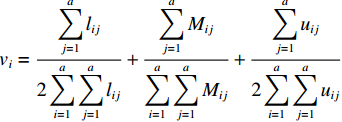








































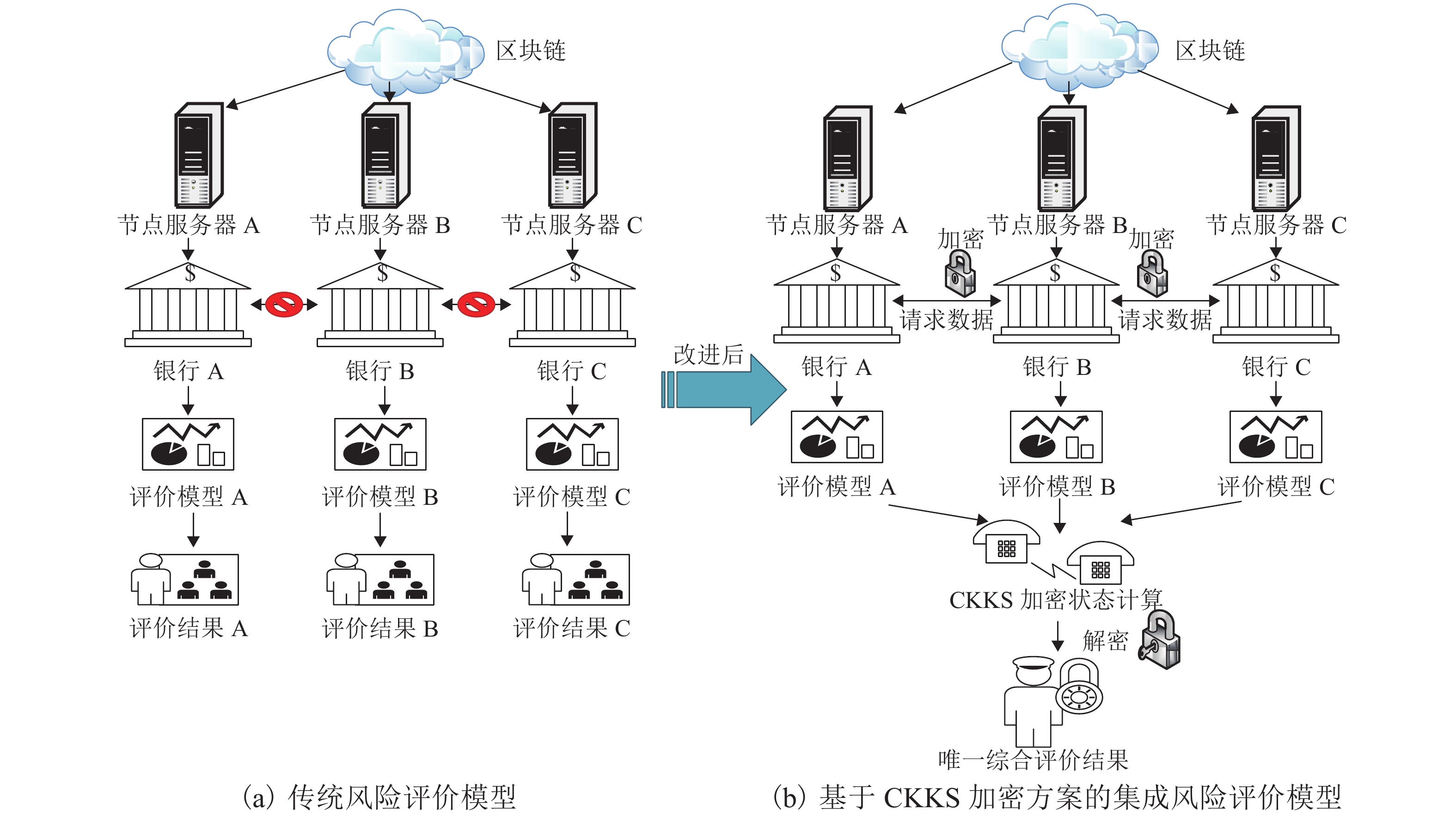
 下载:
下载:
